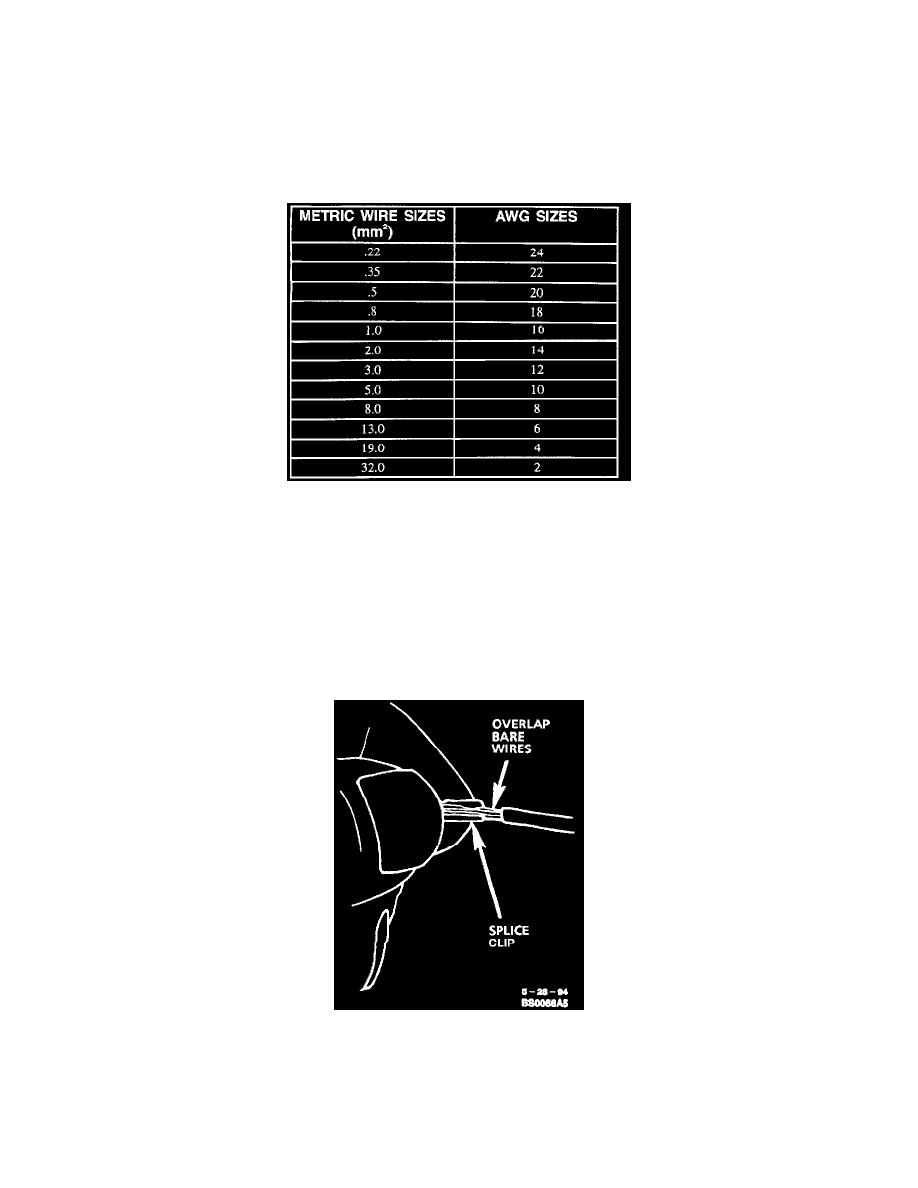Astro Van L AWD V6-4.3L VIN W (1996)

Step 1: Open the Harness
If the harness is taped, remove the tape. To avoid wire insulation damage, use a sewing "seam ripper" to cut open the harness (available from
sewing supply stores). If the harness has a black plastic conduit, simply pull out the desired wire.
Step 2: Cut the Wire
Begin by cutting as little wire off the harness as possible. You may need the extra length of the wire later if you decide to cut more wire off to
change the location of a splice. You may have to adjust splice locations to make certain that each splice is at least 40 mm (1.5 in.) away from other
splices, harness branches or connectors.
Wire Size Conversion Table
Step 3: Strip the Insulation
When replacing a wire, use a wire of the same size as the original wire or larger. The schematics list wire size in metric units. The table shows the
commercial AWG wire sizes that can be used to replace each metric wire size. Each AWG size is either equal to or larger than the equivalent
metric size.
To find the correct wire size either find the wire on the schematic page and convert the metric size to the AWG size, or use an AWG wire gage.
If you aren't sure of the wire size, start with the largest opening in the wire stripper and work down until a clean strip of the insulation is removed.
Be careful to avoid nicking or cutting any of the wires.
Centering The Splice Clip
Step 4: Crimp the Wires
Select the proper clip to secure the splice. To determine the proper clip size for the wire being spliced, follow the directions included in the J
38125-A Terminal Repair Kit. Select the correct anvil on the crimper. (On most crimpers your choice is limited to either a small or large anvil.)
Overlap the stripped wire ends and hold them between your thumb and forefinger as shown. Then, center the splice clip under the stripped wires
and hold it in place.
